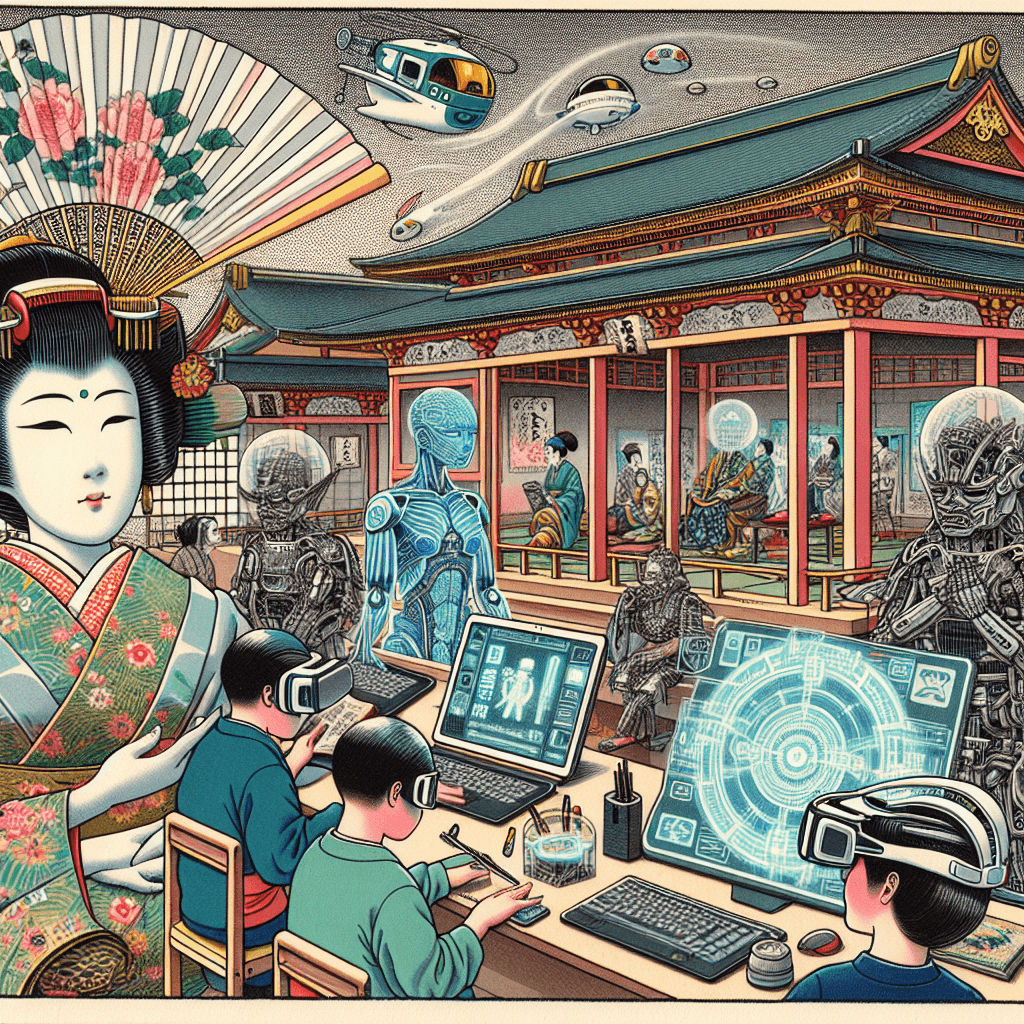What’s Next? Predicting the Future of EdTech
syndu | Sept. 14, 2024, 9:46 p.m.

What’s Next? Predicting the Future of EdTech
The landscape of educational technology (EdTech) is rapidly evolving, driven by advancements in technology and a growing recognition of the need for innovative approaches to education. As we look to the future, several emerging trends and developments are poised to shape the EdTech sector, transforming how we teach and learn. In this blog post, we will explore these trends, their potential impact, and what the future holds for EdTech.
Emerging Trends in EdTech
-
Artificial Intelligence and Machine Learning:
- Personalized Learning: AI and machine learning algorithms are increasingly being used to create personalized learning experiences. These technologies can analyze student data to identify learning patterns, predict outcomes, and recommend tailored interventions, ensuring that each student receives the support they need.
- Intelligent Tutoring Systems: AI-powered tutoring systems provide one-on-one assistance to students, helping them understand complex concepts and offering additional practice where needed. These systems can adapt to individual learning styles and paces, making education more accessible and effective.
-
Virtual and Augmented Reality (VR/AR):
- Immersive Learning Experiences: VR and AR technologies offer immersive learning experiences that bridge the gap between theoretical knowledge and practical application. Students can explore virtual environments, conduct virtual experiments, and interact with 3D models, enhancing their understanding and retention of complex concepts.
- Remote Collaboration: VR and AR enable remote collaboration, allowing students and educators to interact in virtual classrooms and labs. This fosters a sense of presence and engagement, even in remote learning scenarios.
-
Blockchain Technology:
- Secure Credentialing: Blockchain technology is being used to create secure, tamper-proof records of academic achievements and credentials. This ensures the authenticity of qualifications and makes it easier for students to share their achievements with employers and institutions.
- Decentralized Learning Platforms: Blockchain can support decentralized learning platforms, where educational content and resources are distributed across a network of nodes. This promotes transparency, accessibility, and collaboration in education.
-
Gamification:
- Engaging Learning Environments: Gamification incorporates game elements into the learning process to increase engagement and motivation. By integrating points, badges, leaderboards, and challenges, educators can create interactive and enjoyable learning experiences that cater to individual preferences.
- Skill Development: Gamified learning environments can help students develop critical skills such as problem-solving, collaboration, and resilience. These skills are essential for success in the modern world and can be effectively cultivated through game-based learning.
-
Internet of Things (IoT):
- Smart Classrooms: IoT devices are transforming traditional classrooms into smart classrooms, where interconnected devices collect and analyze data to optimize the learning environment. Smartboards, sensors, and wearable devices can provide real-time feedback on student engagement and performance, enabling educators to make data-driven decisions.
- Enhanced Accessibility: IoT can enhance accessibility for students with disabilities by providing assistive technologies that support their learning needs. For example, IoT-enabled devices can offer real-time transcription, translation, and personalized learning aids.
Future Developments in EdTech
- Adaptive Learning Platforms:
- Dynamic Content Delivery: Adaptive learning platforms use algorithms to adjust the difficulty level and content based on student performance. This ensures that each student receives instruction tailored to their needs, promoting mastery and confidence.
- Real-Time Analytics: These platforms provide real-time analytics on student progress, allowing educators to identify learning gaps and intervene promptly. This data-driven approach enhances the effectiveness of instruction and supports continuous improvement.
- Artificial Intelligence in Assessment:
- Automated Grading: AI can automate the grading process, saving educators time and providing students with instant feedback. This is particularly useful for multiple-choice and short-answer questions, where AI can accurately assess responses.
- Formative Assessment: AI-powered formative assessment tools can provide ongoing feedback to students, helping them understand their strengths and areas for improvement. This supports a growth mindset and encourages self-directed learning.
- Global Collaboration and Connectivity:
- Cross-Cultural Learning: Advances in connectivity are enabling global collaboration, where students and educators from different parts of the world can interact and learn from each other. This fosters cross-cultural understanding and prepares students for a globalized workforce.
- Open Educational Resources (OER): The proliferation of OER is making high-quality educational content accessible to learners worldwide. These resources can be freely used, adapted, and shared, promoting equity and inclusivity in education.
- Lifelong Learning and Micro-Credentials:
- Continuous Skill Development: The future of work demands continuous skill development, and EdTech is supporting lifelong learning through micro-credentials and online courses. These bite-sized learning opportunities allow individuals to acquire new skills and knowledge at their own pace.
- Recognition of Skills: Micro-credentials provide a way to recognize and validate skills acquired outside traditional educational pathways. This is particularly valuable for professionals looking to upskill or reskill in response to changing job market demands.
Conclusion
The future of EdTech is bright, with numerous emerging trends and developments set to transform education. From AI and VR to blockchain and gamification, these technologies are creating more personalized, engaging, and accessible learning experiences.
As we move forward, it is essential to embrace these innovations and leverage their potential to enhance education for all. By staying ahead of the curve and adopting a forward-thinking approach, educators and institutions can ensure that they are prepared to meet the evolving needs of learners in the digital age.
Title: What’s Next? Predicting the Future of EdTech
Summary: This blog post explores the emerging trends and future developments in educational technology (EdTech). It highlights the potential impact of AI, VR, blockchain, gamification, and IoT on education and discusses how these innovations are shaping the future of teaching and learning.
Key Points:
- Emerging Trends in EdTech: AI, VR/AR, Blockchain, Gamification, IoT
- Future Developments: Adaptive Learning Platforms, AI in Assessment, Global Collaboration, Lifelong Learning
- Conclusion: Embracing innovation to enhance education for all
Goal: To provide a comprehensive overview of the future of EdTech, inspiring educators and stakeholders to explore and adopt these emerging technologies in their classrooms and institutions.
